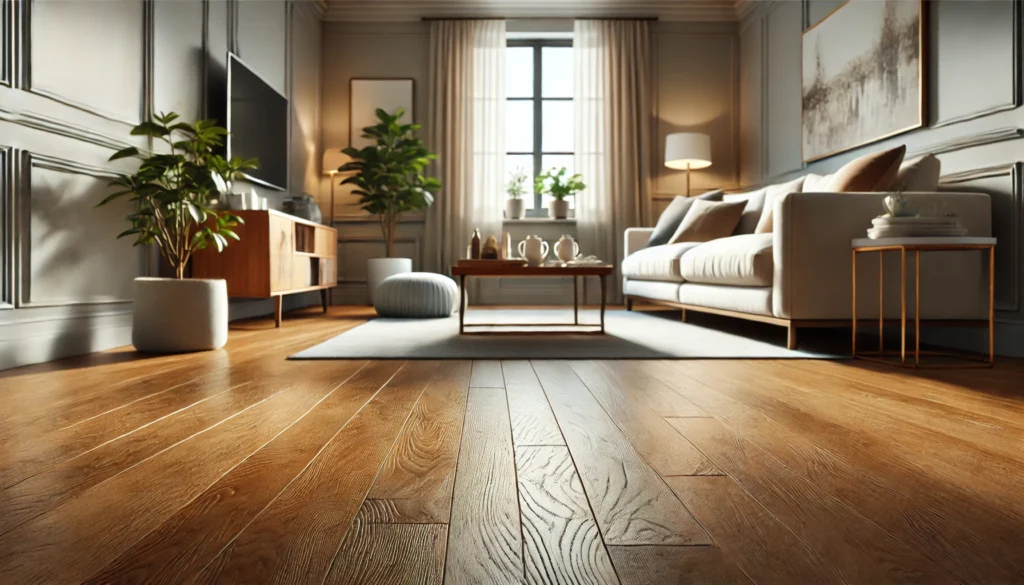Picture this: You’ve invested in beautiful hardwood floors that add warmth and elegance to your home, but over time, they start to lose their shine. Scratches, stains, and dull spots replace that rich, fresh look. You try various products, but nothing seems to work quite right. Could it be that you haven’t found the right cleaner?
A good wood floor cleaner is one that effectively removes dirt, grime, and stains from hardwood surfaces without damaging the wood’s finish. It should enhance the natural luster and texture of the wood, making it look as close to new as possible.
Keeping hardwood floors clean and properly maintained can significantly increase their longevity and aesthetic appeal. The wrong cleaner can strip the finish, leave a sticky residue, or even cause water damage, leading to costly repairs or refinishing. Understanding what makes a cleaner “good” is essential to making an informed decision that protects and enhances your flooring investment.

In this article, we’ll delve into the world of wood floor cleaners, examining what makes a cleaner effective, safe, and worth your time and money. We’ll cover types of cleaners, ingredients to look for (and avoid), application techniques, and insights from cleaning experts. By the end, you’ll be equipped to choose the perfect cleaner for your hardwood floors confidently.
Understanding Wood Floor Cleaners: What Makes One “Good”?
A good wood floor cleaner does more than clean; it preserves the integrity of the wood, prevents buildup, and maintains a non-slip, gleaming finish. Here are the essential factors to consider:
- pH-Balanced Formula: Hardwood floors need cleaners that are neither too acidic nor too alkaline, as extreme pH can strip the wood’s finish.
- Non-Toxic Ingredients: Avoiding harsh chemicals benefits both the floor and your health.
- Residue-Free: Quality cleaners don’t leave behind sticky or cloudy residue, which can dull the floor over time.
- Ease of Use: Cleaners that are easy to apply (like spray-and-mop options) save time and effort.
- Eco-Friendliness: Many people prefer environmentally friendly products free from volatile organic compounds (VOCs) that contribute to indoor air pollution.
Key Ingredients to Look For
- Natural Oils: Enhances shine and protects the wood.
- Essential Oils: Adds a pleasant fragrance without overpowering synthetic scents.
- Plant-Based Surfactants: Effective at breaking down dirt and grime without harming wood.
Ingredients to Avoid
- Ammonia: A harsh chemical that can damage wood finishes.
- Bleach: Strips color and dries out wood.
- Wax Additives: Leaves buildup, making floors dull and slippery.
The History of Wood Floor Care
Historically, wood floor maintenance was a labor-intensive process involving natural oils, beeswax, and other homemade solutions. In the early 20th century, people used linseed oil or turpentine to preserve wood. Today’s products have evolved to include eco-friendly, non-toxic solutions that prioritize both effectiveness and safety.
Types of Wood Floor Cleaners
1. Spray Cleaners
- Best For: Quick, easy clean-ups on small areas.
- Pros: Convenient and easy to use, no rinsing required.
- Cons: Some sprays can leave a residue if overused.
2. Concentrates
- Best For: Deep cleaning and large floor areas.
- Pros: Economical, powerful cleaning action.
- Cons: Requires dilution and can be a bit messy.
3. Natural and Eco-Friendly Cleaners
- Best For: Environmentally conscious homeowners, especially with pets or kids.
- Pros: Non-toxic and low odor.
- Cons: Often more expensive.
4. Polishes and Conditioners
- Best For: Floors with visible wear and dullness.
- Pros: Adds shine and can fill in minor scratches.
- Cons: Can lead to buildup if not used sparingly.
Applications and Uses of Wood Floor Cleaners
General Cleaning Tips
- Regular Sweeping: Prevents dust and dirt from scratching the surface.
- Mopping Frequency: For low-traffic areas, once a week is usually sufficient; high-traffic areas may require two or three times per week.
- Spot Treatment: For spills and stains, act quickly to prevent permanent marks.
Cleaning Techniques
- Spray-and-Mop Method: Ideal for light cleaning, ensuring even coverage.
- Microfiber Mopping: Essential for minimizing streaks and protecting the wood.
- Deep Cleaning: Occasionally using a wood-specific deep cleaner can revive floors without the need for refinishing.
Benefits and Challenges of Using Wood Floor Cleaners
Benefits
- Enhances Appearance: The right cleaner keeps floors looking new by preserving the finish.
- Reduces Allergens: Frequent cleaning helps reduce dust, pet dander, and other allergens.
- Increases Longevity: Regular, appropriate cleaning prolongs the wood’s life, protecting it from wear and tear.
Challenges
- Residue Buildup: Some cleaners, particularly those with wax or oil, can leave residues that require additional cleaning to remove.
- Risk of Damage: Using the wrong cleaner, such as one meant for tile or laminate, can damage the finish or cause warping.
- Cost Considerations: High-quality or eco-friendly cleaners may come with a higher price tag, though they offer long-term benefits.
Expert Insights: What Professionals Say About Wood Floor Cleaners
According to wood floor maintenance experts, the main mistake homeowners make is over-cleaning, which can wear down the finish over time. “Less is often more with wood floors,” says Sarah Caldwell, a certified flooring expert. “Using a gentle cleaner and a soft microfiber mop is enough for daily care.”
Another tip from the pros is to avoid excessive moisture. John Peters, an interior designer, advises, “Water is a wood floor’s worst enemy. Always use a damp—not wet—mop, and go with a cleaner that’s quick to dry.”
Comparing Wood Floor Cleaners with DIY Solutions
DIY Cleaners
Popular DIY solutions, like vinegar and water, can be effective but come with risks. The acidity in vinegar can gradually erode the wood finish. While some homeowners swear by olive oil mixtures, these can sometimes leave floors slick or attract dust.
Store-Bought Cleaners
Store-bought options are typically tested for safety and effectiveness on wood, often offering longer-lasting results than homemade alternatives.
Future Trends in Wood Floor Cleaning
As more people focus on eco-friendly living, the wood floor cleaner market is seeing a shift toward biodegradable, plant-based products with low VOCs. Another emerging trend is the use of probiotics in cleaners, which helps maintain a clean surface by repelling dirt for a longer period.
Conclusion
A good wood floor cleaner enhances your floors’ natural beauty without causing damage or leaving residues. Choosing the right product depends on your floor’s finish, your cleaning habits, and whether you prioritize eco-friendly ingredients. Using an appropriate cleaner not only keeps your floors looking great but also helps maintain their value and longevity.
Final Thoughts
Your hardwood floors deserve the best care, so invest in a cleaner that respects their unique needs. With a little research and regular upkeep, your floors can stay beautiful and sturdy for generations.
Have questions or favorite floor care tips? Share in the comments below, and let’s keep the conversation on wood floor care going! Also, check out our related articles for even more insights on home maintenance.
National Wood Flooring Association: Wood Floor Maintenance Tips
Frequently Asked Questions (FAQs)
1. Can I use regular floor cleaner on hardwood?
No, regular cleaners may contain chemicals that can damage wood. Always choose products specifically designed for wood.
2. Is steam cleaning safe for wood floors?
Steam cleaning is generally not recommended for wood floors, as moisture can penetrate and cause warping or swelling.
3. How often should I polish my hardwood floors?
Polishing once every 2-3 months can maintain shine, but avoid over-polishing, as it can lead to buildup.
